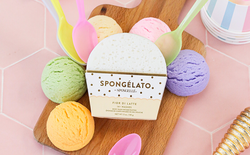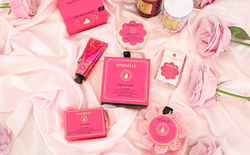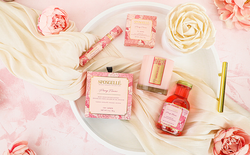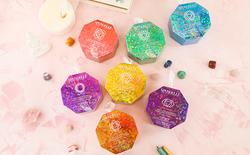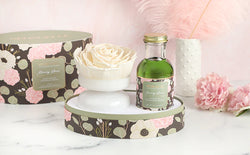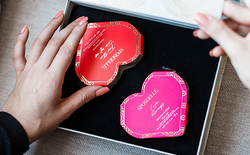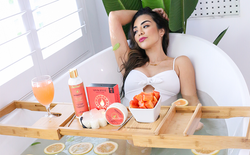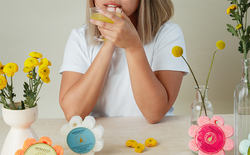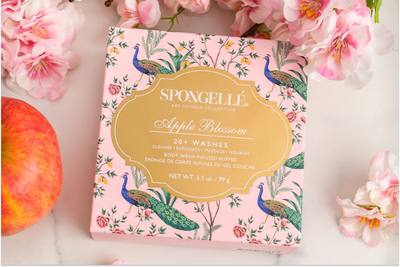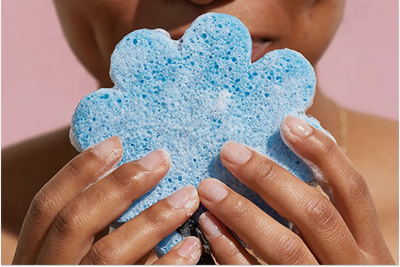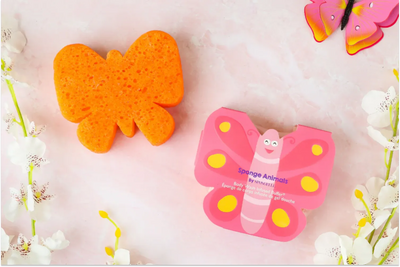We love to pamper our skin, but sometimes, we run into issues.
People who naturally have oily skin may find it hard to juggle all of the decisions that come with balancing out excess oil with moisture maintenance.
Everyone has a different skin type, and these skin types determine how our skin looks, feels, reacts to products, and heals itself.
The four main skin types are as follows:
Depending on your skin type, you may find that alternate skin care routines work better for you. If you have oily skin, you’ll want to know what oily skin actually is as well as how you can tackle the issue.
But, good habits come from routine. So we’ll discuss the steps you need to take as well to balance out your oily skin.
What Classifies as Oily Skin?
Oily skin happens when a person has overactive sebaceous glands. We all have sebaceous glands that help regulate our skin health and moisture levels by producing a natural oil layer of protection on our skin’s outermost layer.
Sometimes these glands can be overactive due to environmental factors, genetics, or an improper skincare routine, etc.
When our sebaceous glands are overactive, they create more oil than needed, especially in our skin’s oil-prone areas. This excess sebum can become mixed with dead skin cells, dirt, and other micro debris on the skin, that can turn into inflammation, red spots, blemishes, and even ingrown hairs if a hair follicle becomes clogged.
What Causes Increased Sebum Production and Oily Skin?
It depends. Your skin is constantly affected by factors that mostly lie out of your control. But, you may be wondering what those factors are.
Here are the most common factors that can increase sebum production and oily skin:
- Genetics: Our genetic history plays a part in how oil our skin is. If our ancestors had overactive sebum glands before us, chances are they passed that along to us.
- Time of year: The weather always has an effect on our skin’s health and vitality. You may see more oiliness in the summer, while your skin may seem drier in the winter. Our
- Increased hormone production: It is no secret that our hormones can have an effect on our bodies and our skin. Your fluctuating hormones can affect how oily or how dry your skin is throughout the month, depending on your cycle. Period breakouts, anyone? Rises in certain hormones most definitely cause a rise in natural oil production.
- Not applying enough moisturizer: Everybody skips moisturizing from time to time, but I’m here to say don’t do it. Always moisturize. It sounds counterintuitive, but hydrated, moisturized skin helps reduce the amount of sebum your skin produces. If your skin is dry, it will produce more sebum to moisturize and protect itself. If it’s hydrated, it will produce less, allowing for a more vibrant, healthy skin.
- Not having the proper skincare routine: This should go without saying, but the right skincare routine can help adjust and regulate the oil production of your skin. In the same token, a routine that was built for somebody else is not going to do your skin any favors, and you risk long term damage to your skin. Everyone’s skin is different and we all experience a different skin reaction to products. That’s why taking the time to build a skincare routine personalized to your skin type and your needs will be the most successful.
What Are the Oily Zones of the Body?
While the majority of our sebaceous glands are located in our scalp and on our face,
We do have several active sebaceous glands located in the upper trunk of the body.
These oily zones include:
- Neck and chest
- Shoulders
- Back
The only place on the body without sebaceous glands is located on the palms of the hands and the soles of the feet.
What Do the Sebaceous Glands and Natural Oils of the Body Do?
These sebaceous glands release sebum, a fatty, triglyceride whose primary function is to help moisturize the hair and all the layers of the skin. It also aids in protecting the skin from external environmental factors.
Balancing out the oils in your skin can also slow down wrinkle production as we age. While you balance out your skin care regimen, be sure you’re not simply stripping away all oils. You have to have oils present to truly get the longest shelf life for your skin health.
How to Care for Oily Skin
This is going to sound counterintuitive because your skin is already naturally oily, but the best skincare routines for oily skin add moisture back in on every level of the routine to help stabilize sebum production and keep the skin healthy.
Many cleansers formulated for oily skin tend to only remove the excess oil without replenishing moisture, which can lead to other skin issues down the road like dry and irritated skin. But don’t fret. We’ve worked out the details and have included the perfect skincare routine for oily skin for you here.
The Step-by-Step Perfect Skincare Routine for Oily Skin
Step One: Cleanse with an oil cleanser.
A simple oil cleanser has a similar makeup to the natural oil layer on our skin, which helps it to really get in there and clean this oil layer without totally removing it. The dirt, old makeup residue, and dead skin are then lifted from the skin, and the skin stays protected.
Step Two: Cleanse again with a hydrating cleanser.
Following with a hydrating cleanser will be more tailored to your skin type and help wash away all the lifted dirt, makeup, and dead skin cells now dislodged from the oil layer.
Step Three: Use a toner.
A quality toner will penetrate your skin to cleanse and hydrate each individual pore and hair follicle, which literally wipes away the last remaining particles of the makeup and grime from the skin.
Choose a moisturizing toner to be sure that you aren’t over-cleansing and instead are keeping your skin moisturized throughout the cleansing process.
If you want, you can use a cotton pad to apply the toner to your face. Be sure to get your jaw line as well as between your eyebrows (your T-zone!).
Step Four: Switch between an exfoliating and a hydrating mask every other day.
Exfoliation is, in essence, a deep clean for your skin, but it is not safe to do every day.
Exfoliation uses friction to remove any stubborn dead skin cells and smooth out rough skin patches. On the days you don’t exfoliate, try using a hydrating mask instead. This can be a sheet mask or a masking moisturizer.
Be sure to rinse your mask off thoroughly when you’re finished.
To make it more interesting, have a mask night with your family or friends. It’s a great way to have some fun while you take care of your skin!
Step Five: Moisturize like it is your full-time job.
Hydrated skin is healthy skin, and every skincare routine needs to be centralized around hydration, especially when you have oily skin.
Moisturizing after cleansing and exfoliation helps coat your skin in a protective layer of hydration. As we go about our day, our skin is exposed to all kinds of different environments and pollutants that can suck the hydration from our skin.
Lock in moisture by applying a light moisturizer during the day and a deep face cream at night.
Step Six: Always use SPF.
Even if you work indoors, you should always follow your morning cleansing routine with SPF. Sun exposure is the leading cause of premature aging and skin cancer. Everyone loves being out in the sun, but it’s important to properly protect your skin with an appropriate SPF for your skin type and skin tone.
With the right practice of a regular routine, you can combat oiliness on your face and on your body while fighting the effects of premature aging due to sun exposure. We suggest putting your new routine into place as quickly as you can and begin exfoliating every other day if your skin type allows it.
At Spongellé we have some great products for conquering oily skin and problem areas of the body. Try out one of our body buffers for clearer, more hydrated skin without the mess and worry of different products and tools.
Our body buffers are gentle enough for regular use, can be hygienically used for us to 20 + washes, and some for even 30 + washes! They cleanse, exfoliate, and hydrate all in one go so all that is left for you to do is moisturize and go about your day!
Sources:
https://www.healthline.com/health/beauty-skin-care/sebum https://www.elle.com/uk/beauty/skin/a36728/double-cleansing-skin-what-is-ithttps://www.self.com/story/oily-skin-mistakes

